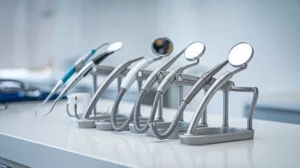
How to Choose the Best Dental Mouth Mirror for Oral Care
Picking the right dental mouth mirror might seem like a small task, but it’s actually pretty important for keeping your teeth and gums healthy. With so many options out there,
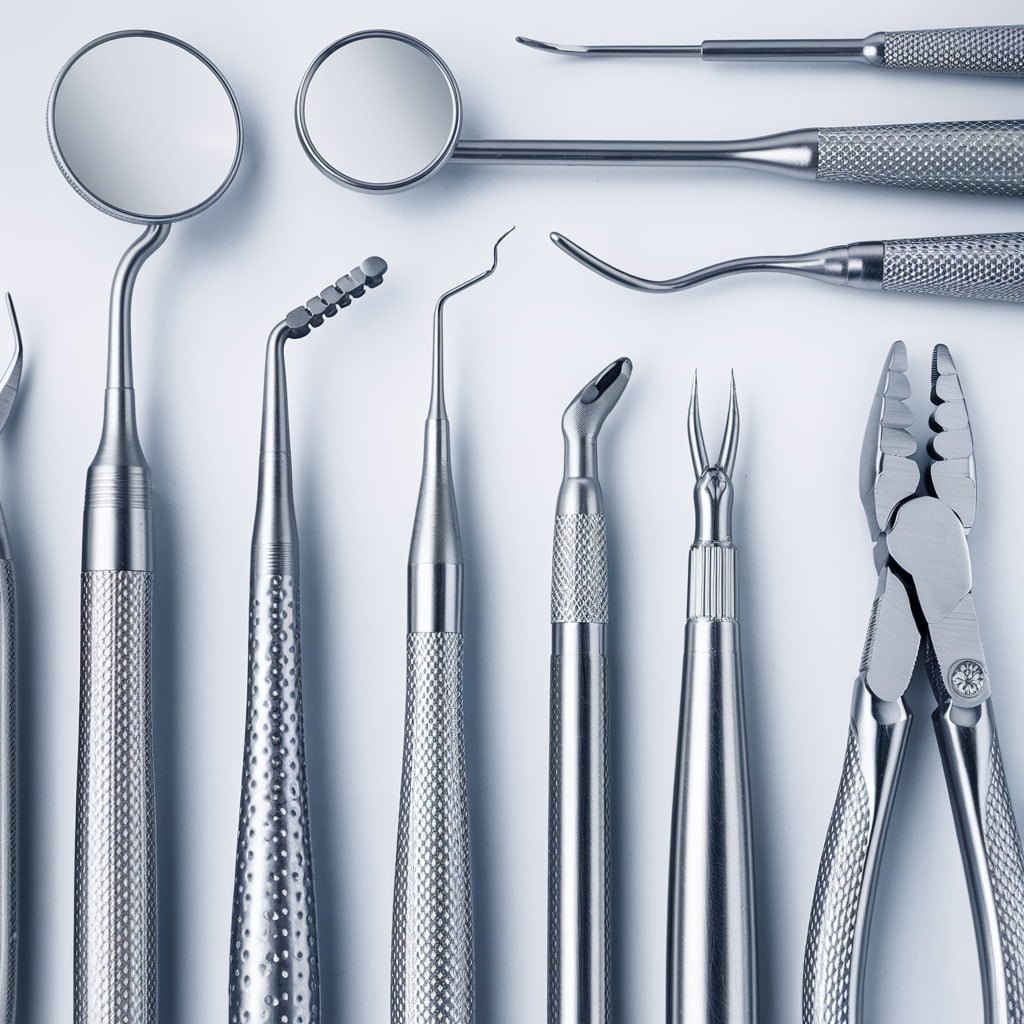
The sort of thing I love about dentistry is our mouth mirror—one of the most fascinating tools in our dental arsenal. This small but mighty instrument serves as our profession’s eyes. It might look like a simple mirror, but it stands as one of the most important basic dental tools we use daily.
This tool’s versatility makes it special. We rely on it for four main functions:
These common dental tools become an extension of our fingers as we check your teeth. Its slightly concave design makes reflected images brighter and larger, which helps us spot even the tiniest problems that need attention. The tool protects both you and us. Without it, we’d have to twist and turn into awkward positions that could lead to chronic back and neck problems.
This instrument helps us maintain proper ergonomics while ensuring your comfort. We make sure to be gentle but firm with tissue retraction, reaching deep enough into the buccal mucosa (cheek area) to provide stable support without causing discomfort. It works like having an extra set of skilled hands during procedures!
A mouth mirror is a small, handheld dental instrument designed to assist dentists and dental hygienists during oral examinations and treatments. It features a reflective surface mounted on a slender handle, allowing practitioners to view otherwise inaccessible areas of a patient’s mouth. This indispensable tool not only enhances visibility but also aids in retracting soft tissues such as the tongue and cheeks, providing a clear field of operation. Its simplicity belies its importance, making it an essential component of every dental setup.
The origins of the mouth mirror can be traced back to the early days of dentistry, when practitioners relied on rudimentary tools to diagnose and treat oral ailments. Over time, advancements in materials and manufacturing processes have transformed this instrument into a sophisticated tool. Today, modern mouth mirrors incorporate antifog coatings and ergonomic designs, reflecting the progress of dental science.
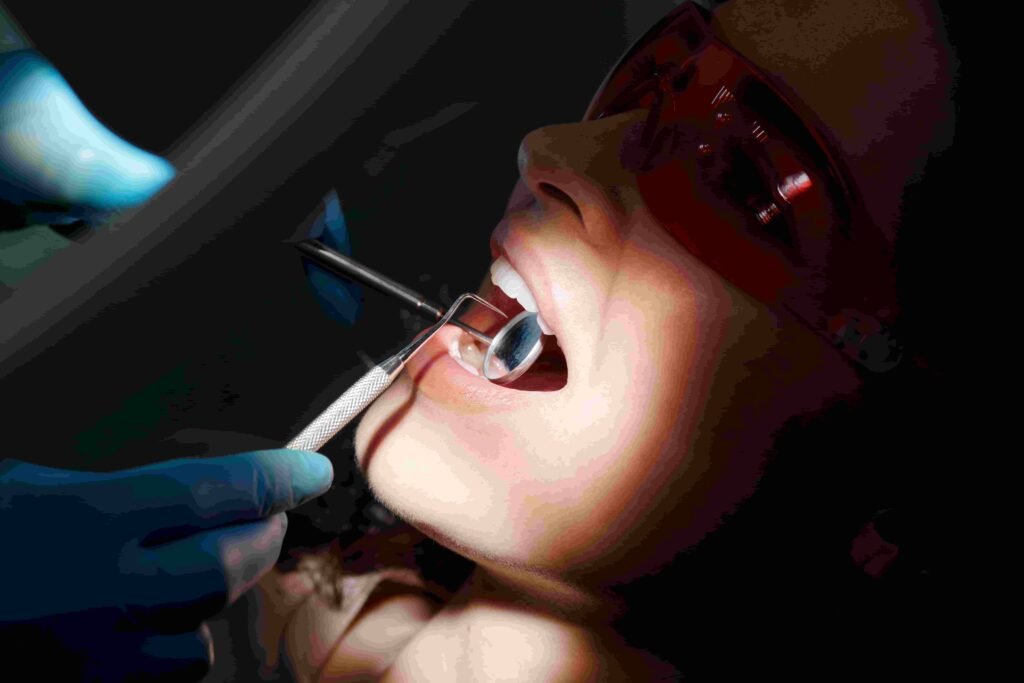
Let’s explore another common dental tool—the sickle probe, also known as a dental explorer. The sharp, curved end might look intimidating at first, but this tool is one of our most valuable diagnostic instruments and causes minimal discomfort.
This basic dental tool helps me detect various oral health problems. It works like a dental detective that helps us find hidden spots between your teeth and under your gum line. The probe detects plaque buildup, identifies potential cavities, and checks your gum’s health.
We use several types of these dental surgery tools based on specific needs:
This tool’s versatility makes it essential. The probe detects problems in spaces around your teeth under the gum line and assesses dental restorations. The sharp tip serves a purpose—it enhances our tactile perception and helps us feel tiny irregularities that might signal developing problems.
The probe is a great way to practice preventative dentistry. My patients benefit from early detection of potential problems, which allows us to take quick action and protect their oral health.
Dental scalers are one of our most powerful common dental tools to keep teeth clean and healthy. Our practice has seen significant advances in scaling technology, especially with the introduction of ultrasonic scalers that changed how we remove plaque and tartar.
The modern ultrasonic scaler operates through high-frequency vibrations, typically ranging from 20-45 kHz. This dental surgery tool combines these vibrations with pressurized water to create an effective cleaning mechanism. The small tip moves faster while releasing a cooling water spray, which makes the procedure gentle and thorough.
Ultrasonic scaling stands out because:
This basic dental tool has improved patient comfort significantly. The non-sharp edges eliminate that uncomfortable scraping sound you might remember from traditional cleaning methods. Ultrasonic scalers can clean periodontal pockets deeper than 4 mm, which makes them a great way to get treatment for gum disease.
Manual scalers still have their place in specific situations, such as treating sensitive teeth or working with composite restorations. The ultrasonic scaler remains our primary instrument for most cleaning procedures. Using both technologies helps us provide the most detailed cleaning experience possible.
The saliva ejector stands out as one of the most frequently used common dental tools in our practice. This sophisticated suction device keeps your mouth dry and comfortable during procedures. The clever tool works through vacuum suction technology and creates negative pressure to remove excess saliva and debris efficiently.
Modern saliva ejectors have evolved significantly. This basic dental tool now features specialized tips designed to optimize comfort and effectiveness. A flexible tube with a soft, specialized tip connects to our dental unit’s vacuum system and generates continuous suction force.
This dental surgery tool serves multiple vital functions in our practice:
Modern saliva ejectors showcase remarkable technological sophistication. Our advanced dental clinic uses surgical aspirators that maintain steady suction speeds. These devices work effectively with saliva and other fluids present during complex procedures.
Patient safety drives our protocols strictly. Our equipment has built-in anti-retraction devices and one-way valves that eliminate backflow risks. Research indicates proper maintenance plays a significant role, as backflow samples can contain certain bacteria.
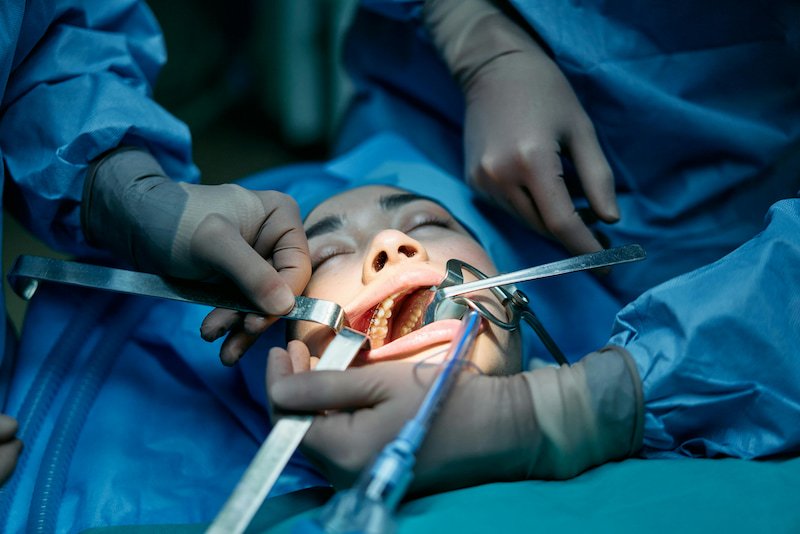
A dental handpiece, which most people call a dental drill, is the powerhouse among our common dental tools. This sophisticated dental surgery tool operates at incredibly high speeds, reaching 300,000 to 400,000 RPM in high-speed models.
Our practice uses two main types of handpieces. Air-driven handpieces dominate the market and excel in size and weight. Electric handpieces make up about 30% of the market share and deliver consistent torque with steady power up to 200,000 RPM.
These versatile basic dental tools serve multiple procedures:
Modern dental drills fascinate me with their sophisticated design. Each handpiece has three essential parts: a handle that provides grip control, a gently curved neck for ergonomic handling, and a head where different types of burs attach. The burr’s roughness follows a color-coding system—white indicates super-fine while black represents super-big—which helps us select the right tool for each procedure.
High-speed handpieces amaze me with their ability to remove hard tissue without pressure, heat, or vibration. This technology has reshaped the scene of dental care and made procedures faster and more comfortable for patients.
Dental anesthesia delivery has changed dramatically since computer-assisted systems entered our practice. These sophisticated dental surgery tools have revolutionized how we give local anesthesia. The process is now more comfortable for patients and practitioners alike.
Our modern dental office employs advanced systems like The Wand®. This system stands out because of its lightweight design and precise control. The sort of thing I love about this common dental tool is how it delivers anesthesia with controlled injection speeds at three different stages. The system’s ergonomic design makes it about half the size of traditional syringes, which gives us exceptional handling precision.
We’ve added several technological breakthroughs that boost patient comfort:
These basic dental tools are remarkably versatile when performing different types of anesthesia. They offer unprecedented control from infiltration to intro-ligament procedures. Computer-assisted delivery has revolutionized my practice. I can now give anesthesia while keeping an ergonomically correct position.
The biggest breakthrough I’ve seen is how these systems help eliminate patients’ main fear—the dreaded needle stick. We can reduce tissue damage and burning sensation that usually comes with injections by a lot. This happens because we control the flow rate and pressure.
Dental molds, one of our dental surgery tools, have come a long way since their humble beginnings with beeswax impressions in the 1700s. Our practice now employs state-of-the-art materials and digital technologies that have revolutionized the way we capture your oral structures’ intricate details.
We work with three main categories of modern dental mold materials, each with its unique advantages. Polyethylene (PE) impressions capture details finer than human hair. The 1970s brought us vinyl polysiloxane (VPS), which delivers exceptional stability and patient comfort through its odorless and tasteless properties. PVES, a hybrid material, combines the best features of both.
The sort of thing I love about our current capabilities is the digital impression technology. Our intraoral scanner creates highly accurate 3D images of your mouth and achieves precision levels between 20 and 70 microns for fixed prostheses. These common dental tools have revolutionized our workflow in several ways:
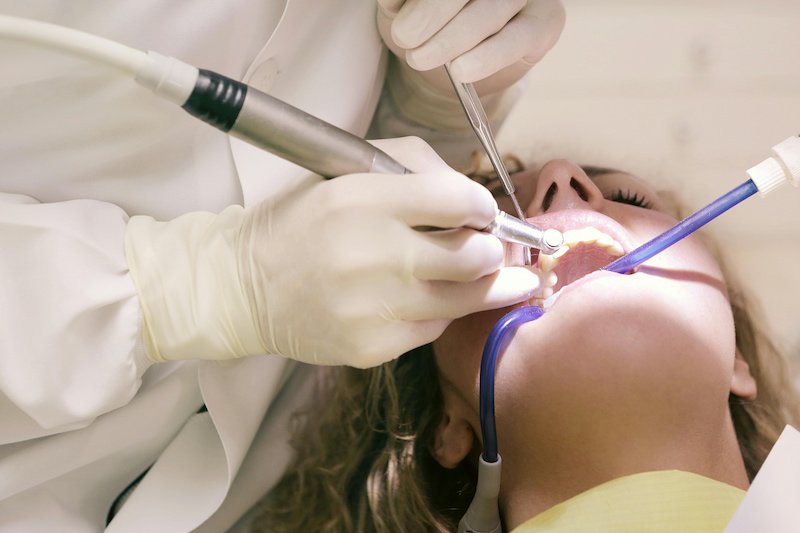
Modern dental practices now feature sophisticated suction systems that represent a breakthrough in dental surgery tools. These powerful devices do much more than keep your mouth dry—they play a vital role in patient safety and optimize procedures. Our practice employs two different types of suction: high-volume evacuators (HVE) and saliva ejectors that each serve unique purposes.
Our high-volume evacuators’ performance is nowhere near ordinary—they can reduce aerosol production by 90-98%. This feature has become increasingly significant, especially when performing complex procedures like crown preparations and extractions. The systems operate at an ideal vacuum energy level of 10″ of Hg to ensure optimal performance during every procedure.
These systems are among our most important common dental tools and provide multiple benefits:
Proper maintenance of these basic dental tools makes a huge difference. Our team follows a strict cleaning protocol at the end of each clinical day. This approach helps maintain peak suction performance that procedures requiring precise moisture control demand.
Dental suction technology’s development has changed how we deliver safe, efficient care. A properly functioning vacuum system boosts patient comfort and substantially reduces contamination and infection risks.
Precision remains paramount in our dental practice, and the spoon excavator stands out as one of our most delicate yet powerful common dental tools. This specialized instrument features a distinctive spoon-shaped working end that helps us perform intricate procedures with exceptional accuracy.
Our dental surgery tool comes in three distinct sizes:
This basic dental tool provides superior tactile feedback during procedures. Our hand excavation process lets us feel the difference between healthy and compromised tooth structure. The curved terminal shank sits at a precise 60-degree angle to the handle and gives us exceptional control and access to challenging areas.
High-carbon stainless steel construction makes our spoon excavators impressively durable. The sort of thing I love about these tools is how they stay sharp even after repeated use. This is a vital quality because we depend on them daily to disrupt carious biofilm while minimizing over-preparation of tooth structure.
The spoon excavator’s effectiveness in selective caries removal has changed how we approach cavity preparation. We now work more conservatively and preserve healthy tooth structure while removing decay effectively.
Let me tell you about one of the most versatile basic dental tools that makes our daily procedures easier: cotton pliers. These precision instruments are made from premium 440A German stainless steel and have become essential in our dental toolkit.
These dental surgery tools stand out because of their smart design. The finely serrated tips give you excellent control with a non-slip grip, and the angled design helps you reach posterior regions easily. Our team finds these features perfect to handle various materials with precision.
Our cotton pliers perform several significant functions:
These common dental tools work like an extra pair of hands during complex procedures. They shine in every part of our practice, from simple cleanings to post-operative care. The instruments are fully autoclaved to maintain high sterilization standards, and their corrosion-resistant properties ensure they last long.
Modern cotton pliers help us deliver faster and more complete dental hygiene appointments. They prove their worth in our daily practice when we place cotton rolls for isolation or manage small instruments.
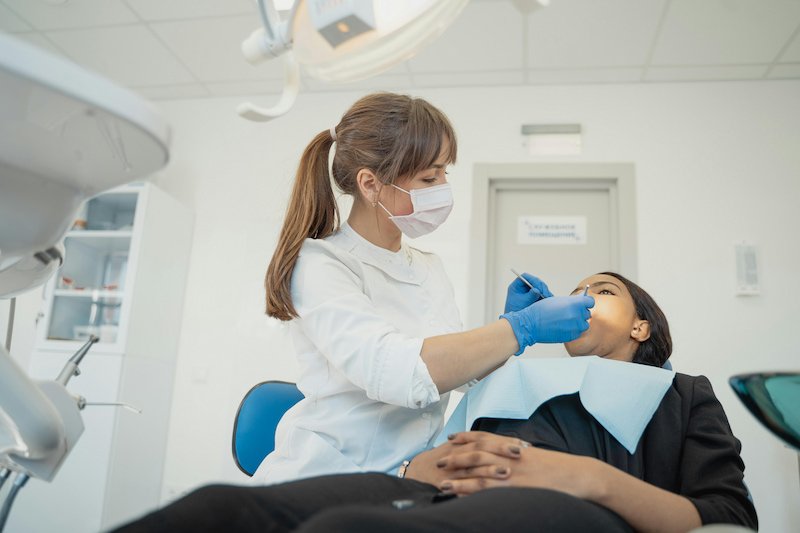
Dental tools have revolutionized how we care for our patients. Simple tools like mouth mirrors and state-of-the-art computer-assisted syringes are the foundations of comfortable and quick dental treatment. These instruments help us catch problems early, work with precision, and keep you safe during your visits.
The way our instruments work together amazes me as your dentist. Traditional tools combined with advanced technology give us better ways to diagnose and treat dental conditions. When patients understand these tools better, their anxiety goes down and they trust us more.
Our practice welcomes new technology that keeps making dental visits better. You’ll spend less time in the chair and get better results for your dental health. My team stays up to date with the latest tools to give you the best care possible.
Let’s explore the essential tools we use in modern dentistry by answering your most pressing questions.
Dental professionals rely on four fundamental dental surgery tools. Mouth mirrors help with visibility and retraction. Explorers detect cavities effectively. Scalers remove tartar buildup, while cotton pliers handle materials precisely. These tools are the foundations of our diagnostic and treatment capabilities.
Our most frequently used common dental tools extend beyond the basics:
The term “sugar spoon” doesn’t exist in dentistry, but the sort of thing I love is how this term sometimes describes our spoon excavators. These specialized tools help us remove decay and shape composite materials during restorations.
Several specialized basic dental tools make filling procedures possible. Excavators remove decay efficiently. Carvers shape materials with precision, and pluggers condense filling materials properly. Modern composite filling procedures need specialized curing lights and polishing instruments.
Modern dental practices employ a detailed array of instruments that range from diagnostic tools to specialized surgical instruments. Explorers detect cavities accurately. Scalers clean teeth thoroughly, and various handpieces perform different procedures. Each tool plays a specific role in delivering optimal dental care.
What tools do dentists use to pull the teeth?
Dentists use dental forceps and elevators to pull teeth.

Picking the right dental mouth mirror might seem like a small task, but it’s actually pretty important for keeping your teeth and gums healthy. With so many options out there,
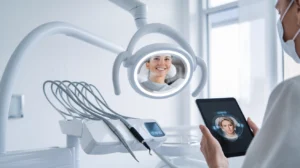
Dental mirrors have come a long way. From simple reflective tools to sophisticated gadgets, they play a key role in modern dentistry. With constant innovation in dental mirrors, these aren’t
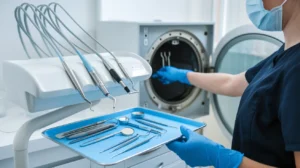
Hey there, dental pros! Today, we’re diving into something super important but often overlooked—how to properly mouth mirror sterilization. If you’re in the dental field, you know these little tools
At The Surgical Kit, we are committed to providing healthcare professionals with the finest tools to ensure precision and safety in every procedure.